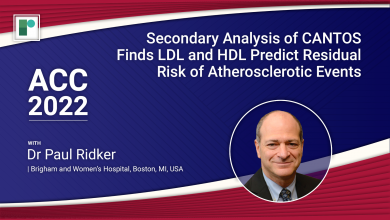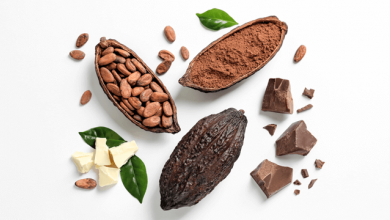Search results
Author(s):
Evan A Stein
Added:
3 years ago
Proprotein convertase subtilisin/kexin type 9 (PCSK9), discovered in 2003, is a circulating protein produced predominantly in the liver that plays a significant role in the recycling of LDL receptors (LDLRs).1,2 The LDLR, which normally recycles about 100 times in its lifetime, is the primary pathway for LDL-cholesterol (LDL-C) clearance from circulation. Plasma PCSK9 binds to LDLRs along with…
View more
Author(s):
Nieca Goldberg
Added:
3 years ago
Cardiovascular disease (CVD) is the leading cause of death and disability in American women. Since 1984, more women have died of cardiovascular disease than men. More than 200,000 of these deaths are due to coronary heart disease.1 In two-thirds of these women, sudden death was the presenting symptom and studies2 show that 90% of them had at least one of the modifiable risk factors (e.g…
View more
Author(s):
Derrick L Woodward
,
Dhanansayan Shanmuganayagam
,
John D Folts
Added:
3 years ago
Epidemiological studies indicate an inverse relationship between the consumption of fruits and vegetables, rich in polyphenolic compounds, and cardiovascular disease.2 These findings offer an explanation for the 'French Paradox™, the paradoxical observation that the French have a lower incidence of cardiovascular disease than Americans, despite having similar cardiac risk factors.3 The French…
View more
Author(s):
Glenn I Fishman
,
Richard I Levin
Added:
3 years ago
Abstract
Recently, we had the opportunity to review the progress that has been made in the field of cardiovascular disease over the past century in The FASEB Journal and, based on those thoughts, in this article we predict what may transpire in this 'century of biology'. Although it is true that 'the best way to predict the future is to invent it', we gaze through the prism of modern…
View more
Author(s):
Aishat F Mustapha
,
Anna M Goebel
,
Bryan J Wells
Added:
6 months ago
Author(s):
Stéphane G Carlier
,
Kaoru Tanaka
,
Amin Katouzian
Added:
3 years ago
Most cases of myocardial infarction and stroke occur when a thrombus is formed on a previously stable plaque that ruptures.1 Persons at risk typically have no premonitory symptoms, and angiographic studies of coronary arteries in patients with non-fatal acute coronary syndromes (ACS) showed that most such events are due to rapid progression of mild, hemodynamically insignificant lesions.2–4…
View more
Author(s):
Wolfgang Koenig
,
Natalie Khuseyinova
Added:
3 years ago
Atherosclerosis is characterized by a non-specific local inflammatory process accompanied by a systemic response. A number of prospective studies in initially healthy subjects and in patients with manifest atherosclerosis have now convincingly demonstrated a strong and independent association between even slightly elevated concentrations of various systemic markers of inflammation and a number of…
View more
Author(s):
Wolfgang Koenig
,
Natalie Khuseyinova
Added:
3 years ago
Atherosclerosis is characterized by a non-specific local inflammatory process accompanied by a systemic response. A number of prospective studies in initially healthy subjects and in patients with manifest atherosclerosis have now convincingly demonstrated a strong and independent association between even slightly elevated concentrations of various systemic markers of inflammation and a number of…
View more
ACC 22: Secondary Analysis of CANTOS Finds LDL & HDL Predict Residual Risk of Atherosclerotic Events
Author(s):
Paul M Ridker
Added:
2 years ago
Video
Author(s):
Norman K Hollenberg
Added:
3 years ago
Chocolate and cocoa are gifts of the Americas to the rest of mankind. When the Spanish conquistadors came to the New World about 500 years ago, they found ingestion of cocoa to be part of the Inca culture. Its use was reserved for royalty, and its function involved sexual interest and sexual performance—the king had a substantial harem. In the past several hundred years, a wide variety of medical…
View more












 « First
« First